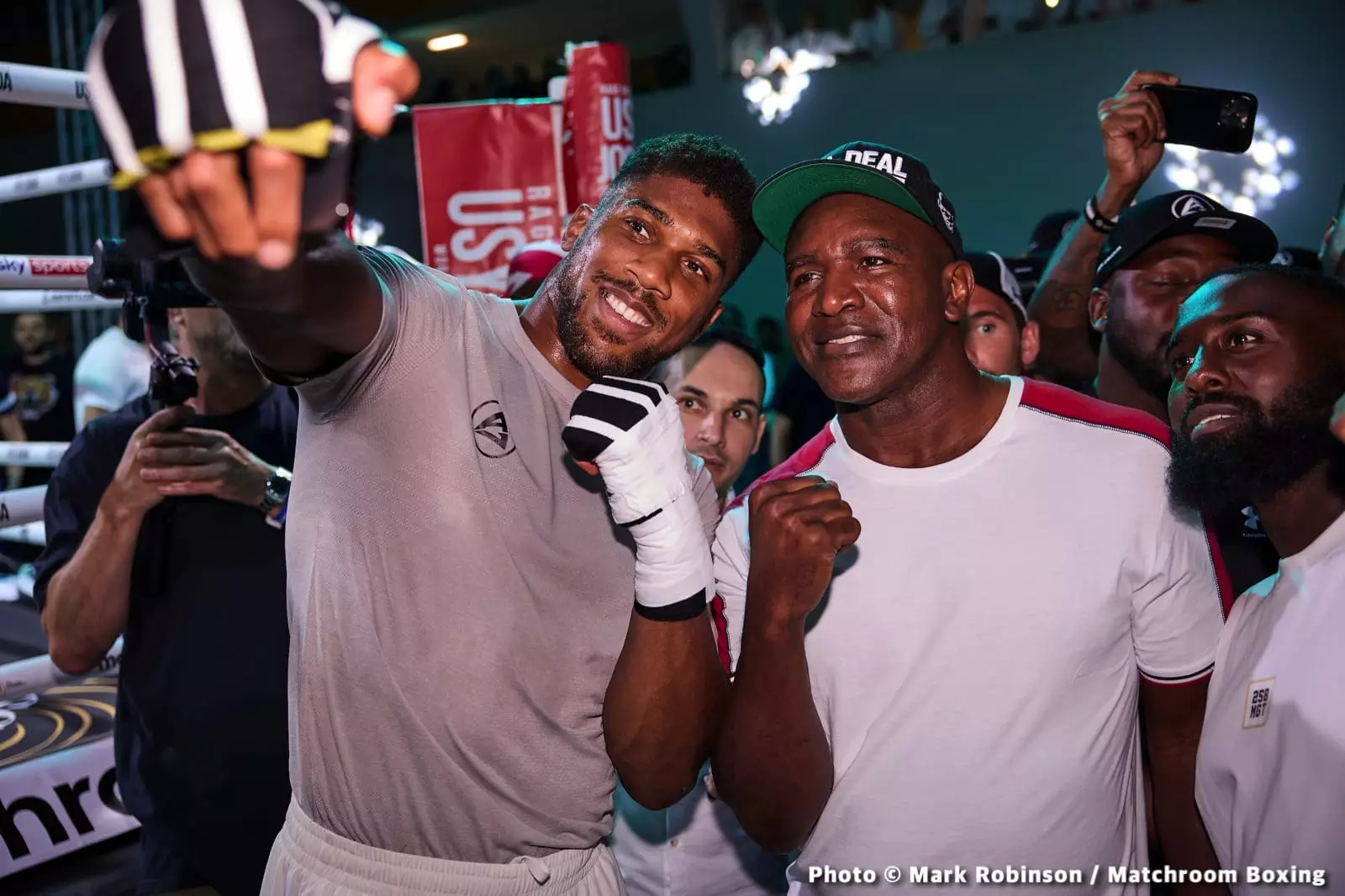Evander Holyfield, a name that resonates deeply in the boxing world, has carved out a legacy that continues to ignite debate among fans and analysts. Recently, during the Ring Magazine Awards in London, Holyfield, a former unified heavyweight and cruiserweight champion, expressed his discontent with the recognition he receives compared to the venerated Muhammad Ali. This discussion presents an opportunity to re-examine Holyfield’s contributions to boxing and the criteria that define greatness in the sport.
Holyfield is famously known as the only four-time heavyweight champion, a feat he achieved by capturing the title across various periods: first from 1990 to 1992 when he became the undisputed champion, followed by subsequent reigns in the early and late 1990s. His assertion that he deserves to be ranked above Ali stems from this record. Holyfield emphasizes the significance of breaking records, believing that his unprecedented achievement has not been adequately recognized by the media or boxing aficionados. This contention prompts a larger dialogue about how boxing greatness is assessed.
While Holyfield’s accolades are indeed impressive, quantifying greatness in boxing often requires more than just the number of titles won. For many enthusiasts and experts, the quality of opposition faced, the era in which one fought, and the context of each bout play crucial roles in determining a fighter’s historical standing. Holyfield’s career features victories over legendary fighters like George Foreman and Riddick Bowe, forging a path defined by resilience and tenacity. However, Ali’s résumé contains victories against a comparable, if not superior, array of opponents, which complicates the argument for Holyfield’s supremacy.
It is essential to consider the boxing landscape during both fighters’ careers. Ali’s tenure as a champion occurred during a period when there was a single recognized heavyweight champion, simplifying the path to greatness. In contrast, during Holyfield’s prime, boxing was fragmented; multiple organizations issued heavyweight titles, creating an environment where fighters like Holyfield could accumulate belts from various sanctioning bodies. This difference raises a poignant question: does the sheer volume of titles won actually equate to a more significant legacy?
Holyfield believes his accomplishments speak for themselves, but one must also analyze the quality of opposition faced in pivotal fights. For instance, his victory over John Ruiz, while notable, is often scrutinized regarding its historical weight. Ali not only competed against but also triumphed over the greatest heavyweights of his era, including Joe Frazier and George Foreman, which adds layers to his storied legacy.
Another layer to Holyfield’s frustration is the perception that the boxing community has historically sidelined him in favor of Ali’s narrative. This sentiment reflects a broader trend in sports history, where certain figures are enshrined as icons while others remain in the shadows despite their considerable achievements. Holyfield’s achievements could warrant greater respect and acknowledgment, yet comparisons with Ali illustrate the complexities inherent in ranking fighters.
Moreover, boxing has evolved with the emergence of new fighters, and current stars like Floyd Mayweather and Canelo Alvarez have also redefined historical benchmarks. Their accomplishments, represented by the number of titles across multiple weight classes, evoke questions about what it truly means to be the greatest. Evaluating their legacies alongside Holyfield’s and Ali’s demonstrates how multiplicity in titles and eras creates a multifaceted narrative of greatness in boxing.
In championing his legacy and expressing disgruntlement at the ongoing discussion surrounding Ali’s status, Evander Holyfield has sparked a necessary reevaluation of what constitutes greatness within the sport. Each of these athletes—Holyfield, Ali, Mayweather, and Alvarez—paved their own pathways to success, fundamentally shaping boxing history in unique ways.
Ultimately, the debate about who holds the title of “greatest heavyweight” may never see a definitive conclusion. Each generation will inevitably weigh the champions of their time against those who came before, contributing to the rich tapestry of boxing lore. The dialogue encourages fans to recognize not only the titles won but also the fighters’ broader impact on the sport itself. Holyfield’s crusade for acknowledgment is not just a personal endeavor; it is a clarion call for a nuanced understanding of boxing’s storied past and the warriors who shaped it.


Leave a Reply